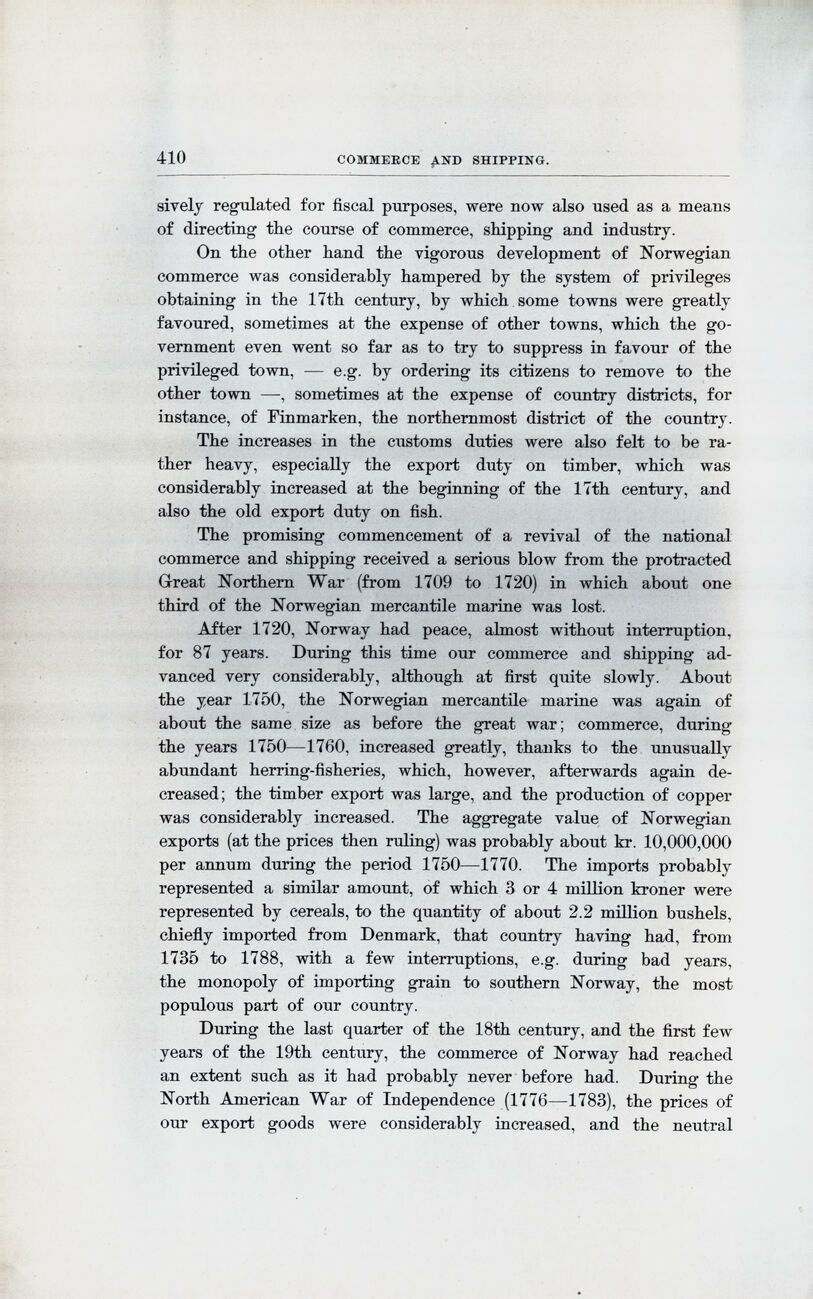
Full resolution (JPEG) - On this page / på denna sida - Commerce and Shipping, by A. Th. Klær

<< prev. page << föreg. sida << >> nästa sida >> next page >>
Below is the raw OCR text
from the above scanned image.
Do you see an error? Proofread the page now!
Här nedan syns maskintolkade texten från faksimilbilden ovan.
Ser du något fel? Korrekturläs sidan nu!
This page has been proofread at least once.
(diff)
(history)
Denna sida har korrekturlästs minst en gång.
(skillnad)
(historik)
exclusively regulated for fiscal purposes, were now also used as a means
of directing the course of commerce, shipping and industry.
On the other hand the vigorous development of Norwegian
commerce was considerably hampered by the system of privileges
obtaining in the 17th century, by which some towns were greatly
favoured, sometimes at the expense of other towns, which the
government even went so far as to try to suppress in favour of the
privileged town, — e.g. by ordering its citizens to remove to the
other town —, sometimes at the expense of country districts, for
instance, of Finmarken, the northernmost district of the country.
The increases in the customs duties were also felt to be
rather heavy, especially the export duty on timber, which was
considerably increased at the beginning of the 17th century, and
also the old export duty on fish.
The promising commencement of a revival of the national
commerce and shipping received a serious blow from the protracted
Great Northern War (from 1709 to 1720) in which about one
third of the Norwegian mercantile marine was lost.
After 1720, Norway had peace, almost without interruption,
for 87 years. During this time our commerce and shipping
advanced very considerably, although at first quite slowly. About
the year 1750, the Norwegian mercantile marine was again of
about the same size as before the great war; commerce, during
the years 1750—1760, increased greatly, thanks to the unusually
abundant herring-fisheries, which, however, afterwards again
decreased; the timber export was large, and the production of copper
was considerably increased. The aggregate value of Norwegian
exports (at the prices then ruling) was probably about kr. 10,000,000
per annum during the period 1750—1770. The imports probably
represented a similar amount, of which 3 or 4 million kroner were
represented by cereals, to the quantity of about 2.2 million bushels,
chiefly imported from Denmark, that country having had, from
1735 to 1788, with a few interruptions, e.g. during bad years,
the monopoly of importing grain to southern Norway, the most
populous part of our country.
During the last quarter of the 18th century, and the first few
years of the 19th century, the commerce of Norway had reached
an extent such as it had probably never before had. During the
North American War of Independence (1776—1783), the prices of
our export goods were considerably increased, and the neutral
<< prev. page << föreg. sida << >> nästa sida >> next page >>